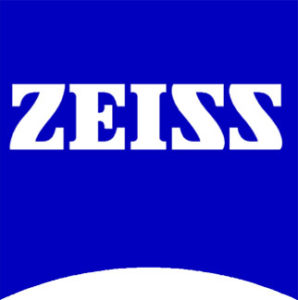News › ZEISS • New planetarium projector
ZEISS ASTERION – A Star Projector for the Digital Age
 ZEISS is launching a new planetarium projector. The all-new ZEISS ASTERION is an optomechanical component designed to be used with a digital dome projection system for Hybrid Planetariums. The projector features a new design, with a Star Ball that is only as big as a medicine ball. It is the world’s smallest and is suitable for use in planetariums with small and medium-sized domes (with a diameter from 8 m to 18 m) – and it generates the brightest night sky yet.
ZEISS is launching a new planetarium projector. The all-new ZEISS ASTERION is an optomechanical component designed to be used with a digital dome projection system for Hybrid Planetariums. The projector features a new design, with a Star Ball that is only as big as a medicine ball. It is the world’s smallest and is suitable for use in planetariums with small and medium-sized domes (with a diameter from 8 m to 18 m) – and it generates the brightest night sky yet.
Even in the digital age, it is only possible to recreate a realistic night sky using an optomechanical projector. The ZEISS ASTERION creates stars that are bright and clear, appearing as set points and in their natural brightness gradation. It can also project a very realistic Milky Way utilizing the data of the Gaia space mission. And it does all this in a quality that no digital projector can match. ZEISS ASTERION is controlled together and in sync with the digital representations of the sky. This allows, for instance, the analog star projection and the constellation figures and astronomical coordinates that digitally fade in to blend with one another.
»These days, planetariums that want to continue inspiring their visitors are looking for a projector that is incredibly small yet still capable of generating very bright stars, and is economical,« says Martin Kraus, Head of ZEISS Planetariums. “So, ZEISS needed to miniaturize its high-tech optics. Planetariums won’t just appreciate how much space this projector saves. The ZEISS ASTERION consumes less energy (just 300 watts) than any other planetarium projector in the world. Long-lasting LED light sources mean you’ll never once need to replace projector bulbs!”
In the digital age, no modern planetarium can do without digital video projection. For many planetariums, however, this means having to forego an inspiring night sky, the kind you’ll almost only see high up in the mountains on a clear night, far from any and all distractions. According to Mr. Kraus, tiny, bright points of light like the stars against a pitch-dark sky have placed great demands on digital technology for the foreseeable.
Cutting-edge technologies like computer-assisted simulations and generative production processes such as adaptive manufacturing allow ZEISS to offer a miniaturized optomechanical planetarium projector that meets all the demands of the digital age. »We are confident that the projector will pique the curiosity of both our customers and the visitors that experience its power in the planetarium,« says Mr. Kraus.
About ZEISS
ZEISS is an internationally leading technology enterprise operating in the fields of optics and optoelectronics. In the previous fiscal year, the ZEISS Group generated annual revenue totaling more than 6.4 billion euros in its four segments Semiconductor Manufacturing Technology, Industrial Quality & Research, Medical Technology and Consumer Markets (status: 30 September 2019).
For its customers, ZEISS develops, produces and distributes highly innovative solutions for industrial metrology and quality assurance, microscopy solutions for the life sciences and materials research, and medical technology solutions for diagnostics and treatment in ophthalmology and microsurgery. The name ZEISS is also synonymous with the world’s leading lithography optics, which are used by the chip industry to manufacture semiconductor components. There is global demand for trendsetting ZEISS brand products such as eyeglass lenses, camera lenses and binoculars.
With a portfolio aligned with future growth areas like digitalization, healthcare and Smart Production and a strong brand, ZEISS is shaping the future of technology and constantly advancing the world of optics and related fields with its solutions. The company’s significant, sustainable investments in research and development lay the foundation for the success and continued expansion of ZEISS‹ technology and market leadership.
With over 31,000 employees, ZEISS is active globally in almost 50 countries with around 60 sales and service companies, 30 production sites and 25 development sites. Founded in 1846 in Jena, the company is headquartered in Oberkochen, Germany. The Carl Zeiss Foundation, one of the largest foundations in Germany committed to the promotion of science, is the sole owner of the holding company, Carl Zeiss AG.
Press Contact
Gudrun Vogel
Planetarien
+49 3641 64–2770
moc.ssiez@legov.nurdug
Further information at: www.zeiss.com
